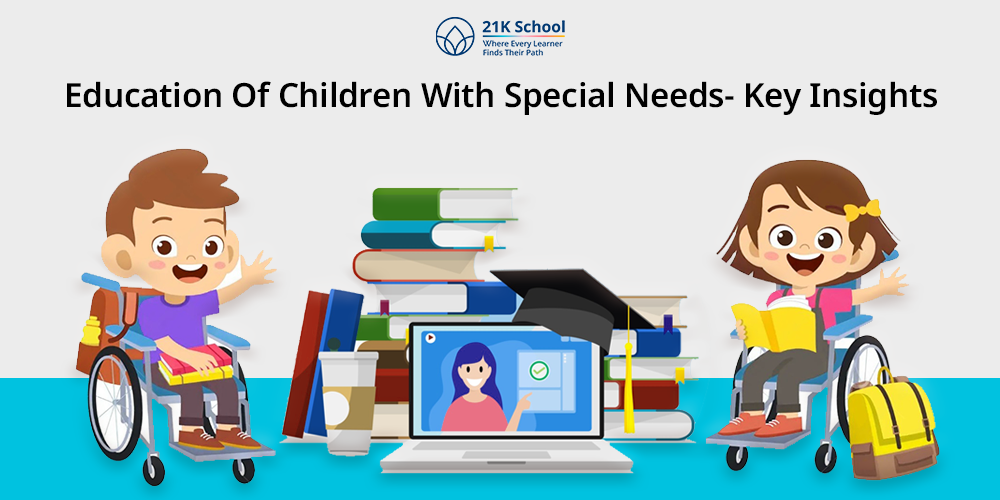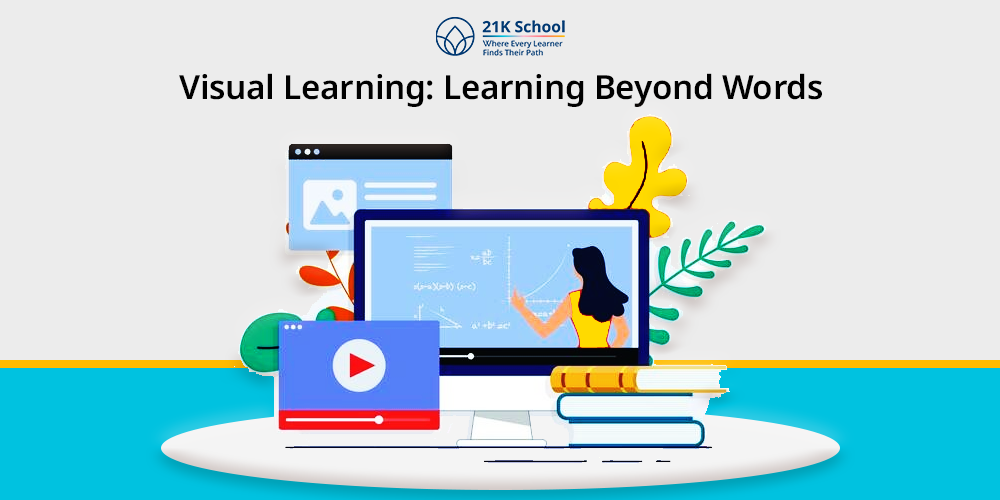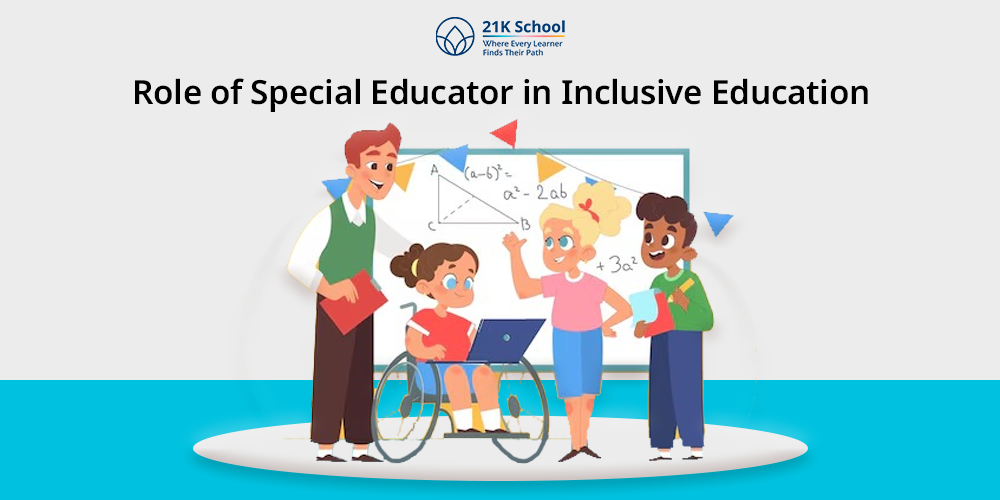
Collaborative learning is an educational approach that values shared learning.
Collaborative learning is a pedagogical approach, usually adopted by schools to transform traditional education methods by introducing learning boosted by groups, that mainly emphasises on active learning, participation, shared responsibility and collective problem solving among students.
When this method of learning is introduced it develops a sense of community and mutual respect among students. It also encourages them to pool their knowledge, skills and resources to achieve academic goals.
In peer to peer collaboration it’s important to understand the strategies behind and implement them thoughtfully.
A strategic implementation will help them overcome challenges and use every feature in favour to benefit the collective understanding in a community.
In this article, we will talk about the concept, strategies, features, benefits of collaborative learning, and challenges.
Before we get into the details, it is important to know:
Contents
- What is Collaborative Learning?
- Collaborative Learning Strategies
- Key Features of Collaborative Learning
- Difference Between Collaborative Learning and Cooperative Learning
- Difference Between Collaborative Learning vs. Individual Learning
- Types of Collaborative Learning
- The Benefits of Collaborative Learning
- Disadvantages of Collaborative Learning
- Examples of Collaborative Learning Activities in the Classroom
- Collaborative Learning: Cognitive Learning Theories
- Conclusion
What is Collaborative Learning?
Collaborative learning involves a group of people working together to achieve a common objective.
It improvises the traditional or conventional teaching methodologies and facilitates group learning and collaborative efforts. Here individuals work together for a shared purpose or learning objective.
Collaboration helps individuals in keeping them grounded with the information they have and ideas.
The collaborative learning environment helps learners in understanding diverse perspectives and enhancing skills, and we all are well aware of the importances of skill based learning.
As compared to the traditional teacher centred learning method, here the learning process is more student centered learning and promotes active engagement and more participation as compared to the conventional method.
But the collaborative learning is not that simple of a concept, it comes with a set of strategies,
So, lets know more about;
Collaborative Learning Strategies
Strategies are techniques that help in structuring the learning process that is both efficient and effective.
So the strategies behind collaborative learning are also very similar but are widely understood and effective for the learning journey.
Some of the widely accepted and used strategies are :
Here, Students individually think about a question and then go ahead and discuss it with a partner.
Once the discussion is done and they achieve a meaningful conclusion they share their thoughts with the larger group. It is a step process where the journey is determined by the evolution of ideas as it becomes solid information with collaboration.
2. Jigsaw Method
In this collaborative learning method, each group has a certain number of members where each individual masters a specific topic and becomes an “expert”, then the person moves ahead and teaches the same concept to all other members in the group.
3. Round Robin
It’s like passing parcels and taking turns to speak their mind out and contribute to the group activity with ideas and answers.
This form of collaboration gives a fair share of opportunity to everyone in the group.
4. Group Investigations
It’s very simple, students form groups or teams, and then the teams collaboratively research a topic and present their findings.
Clear objective and shared responsibility for research and not very fair but clearly a better approach to collectively contribute and learn in groups.
5. Peer Review
Here, in this form of collaborative learning the students involved in the classroom setup review and provide constructive feedback on each other’s work.
6. Role Assignments
It’s very similar to group investigation but in this case individuals in a group are assigned specific roles (e.g., facilitator, recorder, presenter) to each group member to ensure balanced participation.
Key Features of Collaborative Learning
Collaborative learning is a very complex process, when implemented in a traditional set-up.
But it has significantly distinctive features that set it apart then all other available alternative teaching methodologies.
- Shared Goals — here, every participant from the group will work toward a common objective.
- Interdependence — it is believed to be interdependent and every member of the group is dependent on the other inorder to win, success depends on the collective efforts of the group.
- Individual Accountability – though in a group, each member contributes and is held responsible for their part; accountability brings in responsibility ultimately resulting in more participation and engagement.
- Interactive Processes — it’s interesting to see how people communicate and interact in this process. It has a lot of active participation and involvement being an interdependent and collaborative approach, it requires a frequent communication and exchange of ideas.
- Diverse Perspectives — collaborative learning has a greater commitment to level of communication and interaction, different viewpoints enrich the learning experience of a student, making them more empathetic and sensible towards the world.
- Active Engagement — in the due process of learning, individuals are expected to be actively involved in discussions and activities.
Difference Between Collaborative Learning and Cooperative Learning
| Aspect | Collaborative Learning | Cooperative Learning |
| Structure | Informal and flexible | Structured and teacher-directed |
| Role of Teacher | Facilitator | Organizer and monitor |
| Role of Students | Self-directed and autonomous | Assigned specific roles and responsibilities |
| Focus | Process-oriented | Outcome-oriented |
| Assessment | Peer and self-assessment | Teacher-driven |
Difference Between Collaborative Learning vs. Individual Learning
| Aspect | Collaborative Learning | Individual Learning |
| Social Interaction | High; requires teamwork and communication | Minimal; focuses on self-paced learning |
| Knowledge Sharing | Ideas are exchanged and expanded collectively | Relies solely on the learner’s perspective |
| Critical Thinking | Stimulated through debates and discussions | Limited to individual interpretation |
| Motivation | Often enhanced by group dynamics | Self-motivation is essential |
Types of Collaborative Learning
Collaborative learning has mainly 5 types :
- Peer Learning
- Cross-Age Learning
- Small Group Discussions
- Problem-Based Learning
- Technology-Enhanced Collaboration
There are not many differences in each type of collaborative learning but the major difference among each is that in Peer Learning, where Students of similar abilities work together, again to share goals and achieve academic validation but with collaborative effort.
In Cross-Age Learning the method is the same, but the difference is based on the age group where older students mentor younger ones, making them more aware of the topics in which they are expertise in.
With Small Group Discussions, individuals form small groups or teams where they brainstorm or discuss topics in depth, and lead to a meaningful discussion.
Under Problem-Based Learning, the groups solve real-world problems collaboratively, regardless of their expertise, age and even cultural boundation. And, we all know the importance of developing problem solving and analytical skills in child,
And finally for Technology-Enhanced Collaboration learners, use tools like Google Docs or Slack to facilitate teamwork, and make better use of technology in their learning process. Because why not ? Obviously technology can support a student’s success.
The Benefits of Collaborative Learning
There are many benefits to collaborative learning, and some may go from personal to professional dimensions but after all they contribute to pens overall holistic development making individuals more confident and aware of things around them, with varied perspective and beetle understanding.
Some benefits to collaborative learning include:
- Enhanced Critical Thinking — Exposure to diverse viewpoints provides deeper understanding of concepts, topics and even real life situations.
- Improved Communication Skills — collaboration in general contributes to communication skills as regular interaction develops listening and articulation abilities in learners, it contributes to the learning process in a well constructive manner too.
- Social Skill Development — collaborative learning helps students in social situations and real life situations as it helps them build teamwork, empathy, and conflict-resolution skills, basically in social skills that helps them grow socially.
- Increased Engagement —- being one of the most interactive teaching methodologies, the activities involved make learning enjoyable and dynamic.
- Higher Retention Rates — why learn, when you can experience and interact. Collaborative environments improve long-term retention of information, due to its higher engagement and interactive features.
- Real-World Application — Being interdependent in situations teaches us lifelong learning in terms of skills and Prepares students for teamwork in professional settings.
Disadvantages of Collaborative Learning
The disadvantages of collaborative learning are very crucial to the situation and need to be catered and kept in mind before implementing in the classroom.
- Unequal Participation — when groups are formed they will never be equally balanced and in such situations some students may dominate, while others contribute minimally.
- Conflict — conflict of opinion may arise in such situations and differences in opinions or work styles can lead to disagreements.
- Time-Consuming — implementing, staregising and Coordinating group activities takes longer than individual tasks, and can be tedious for both educators and learners..
- Dependency Issues — inclusivity not always is accepted , over-reliance on peers can hinder individual accountability, and dependency may result in delayed and compromised work.
- Assessment Challenges — one on one evaluation is easier, and more convenient for facilitators. Evaluating individual contributions in a group can be difficult. Formative assessment requires tools and proper understanding in regards to the strategies involved in the process.
Examples of Collaborative Learning Activities in the Classroom
| Activity | Description | Skills Developed | Classroom Example |
| Debates | Students research and argue for or against a topic in teams. | Critical thinking, public speaking, teamwork | Debating the pros and cons of renewable energy sources. |
| Case Studies | Groups analyze real-life scenarios and propose solutions. | Problem-solving, analytical thinking, collaboration | Solving a case study on ethical dilemmas in business. |
| Interactive Simulations | Role-playing activities that mimic real-world situations. | Decision-making, empathy, creativity | Acting as members of a UN council resolving a global conflict. |
| Group Art Projects | Collaborative creation of visual or performing arts. | Creativity, cooperation, project management | Designing a mural representing school values. |
| Collaborative Writing | Students co-author essays or reports using shared tools. | Writing, communication, digital literacy | Co-writing a research paper on climate change using Google Docs. |
Collaborative Learning: Cognitive Learning Theories
1. Vygotsky’s Theory of Social Development.
Lev Vygotsky described cognitive development as a process that occurs in the social context. His ideas of the Zone of Proximal Development (ZPD) and Scaffolding are basic to collaborative learning.
2. The Cognitive Development Theory
Jean Piaget described the process of cognitive learning i.e building knowledge in early childhood through individual activity.
He suggested that the learners go through phases where the engagement with the environment to be learned from is more participatory.
3. Piaget vs. Vygotsky: Key Differences
Focus: Piaget paid a lot of attention to an individual; Vygotsky stressed on relationships with others.
Learning Process: According to Piaget, learning came singly while according to Vygotsky it came in a group.
4. Kegan’s Cognitive Developmental Theory
Robert Kegan pointed out that cognitive development takes place through growing differentiation of Self and Other relationships.
This theory also emphasizes the fact that learning is social, hence interpersonality is of high importance.
Conclusion
Education is powerful !!
And collaborative learning is a powerful educational approach, this combines strength of individual learners to achieve a shared goal.
Integrating and implementing the strategies of collaborative learning into traditional or conventional classroom’s can nurture critical thinking, communication, and teamwork.
It contributes to the overall holistic development of students and helps them succeed in the future.
Despite its challenges, the benefits of collaborative learning far outweigh its drawbacks.
Thu, we can conclude by stating the fact that collaborative learning is a helpful teaching methodologies that can contribute to one’s development and overall deeper understanding of things as they interact and evolve.



